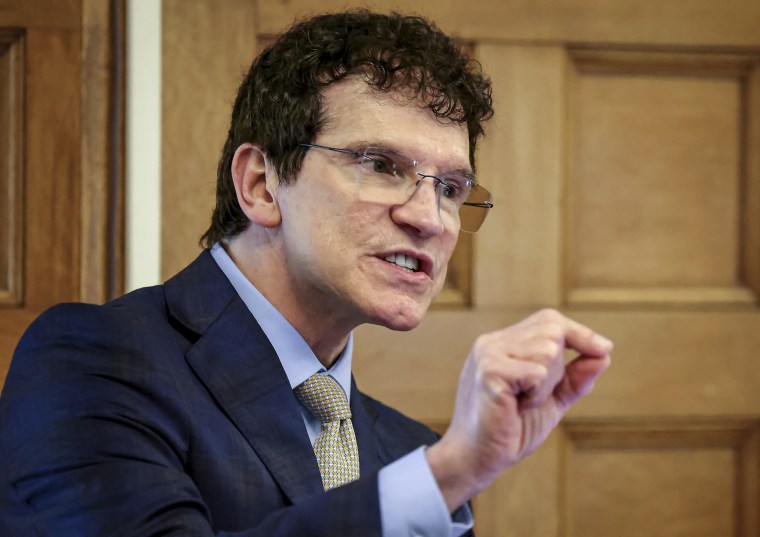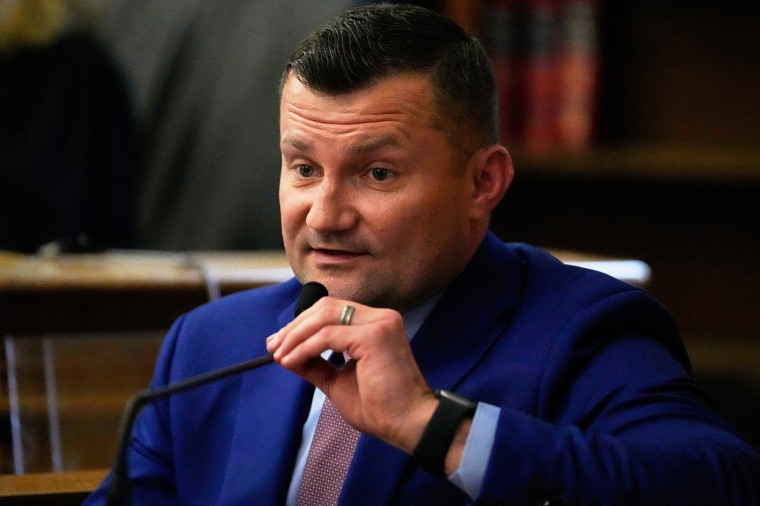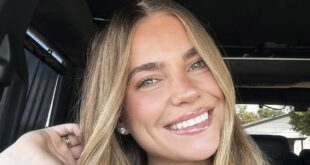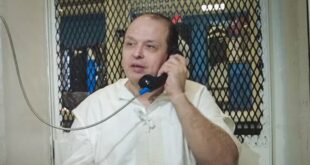
After six weeks and dozens of witnesses, Massachusetts prosecutors retrying Karen Read on a murder charge in the widely publicized death of her boyfriend three years ago rested their case Thursday.
While the theory put forward by special prosecutor Hank Brennan was the same as that offered by the assistant district attorney who previously tried the case — Read, drunk and angry, struck John O’Keefe with her Lexus SUV and left him for dead on Jan. 29, 2022 — there were some notable changes from Read’s first trial, which ended with a hung jury last summer.
Absent were two high-profile witnesses who were key to the defense’s claims that Read was framed. Also missing was the former Massachusetts state trooper who led the investigation into O’Keefe’s death and was fired after revelations of misconduct emerged in the first trial.
More on the Karen Read murder retrial
Another notable change was the role of Read, who has maintained her innocence, herself. In addition to speaking to reporters outside the courtroom, her words have been a regular presence in Brennan’s presentation, which has featured a series of interview clips that show what Brennan has described as Read’s “campaign” of public statements.
Read’s lawyers are expected to begin making their case Friday.
A key witness tries to re-create the scene
The prosecution’s final witness was one of its most important. No cameras captured the events that led to O’Keefe’s death, nor have any witnesses claimed to have seen what happened at 34 Fairview Road — the home in Canton, just south of Boston, where O’Keefe, 46, was found unresponsive in the front yard shortly after 6 a.m. on Jan. 29.
But Judson Welcher, a biomechanical engineer and accident reconstruction expert, testified that data from Read’s 2021 Lexus showed that at 12:32 a.m., outside 34 Fairview, the vehicle drove forward 34 feet, then reversed 53 feet. The SUV was traveling at nearly 24 mph, he said, with a throttle of 74 percent.
While there was no vehicle data to support Brennan’s allegation of a collision, Welcher testified that lacerations on O’Keefe’s right arm were “consistent” with injuries caused by a broken rear right tail light on the SUV.

Welcher testified that his height and weight approximated O’Keefe’s — around 6 feet tall and 220 pounds — and he conducted re-enactments showing what such a collision might look like. In one video, Welcher wore similar clothes as O’Keefe from Jan. 29 — jeans, t-shirt, baseball cap — while a Lexus that was the same model and year as Read’s backed into him at 2 mph.
Welcher also knocked down the defense’s claim that the broken tail light came from a different collision on Jan. 29. As Read left her home around 5 a.m. to look for O’Keefe, she was in a panic, she has said, and she backed her Lexus into his Chevrolet Traverse. Ring camera video played in court captured the incident.
But Welcher testified that an analysis of the video showed Read was driving less than 1 mph at the time and there was no evidence of any damage to either vehicle.
“That impact did not break or crack that tail light,” Welcher said.
Who didn’t they call to testify?
Michael Proctor, the ex-trooper and case agent who managed the investigation into O’Keefe’s death, was included on the prosecution’s list of possible witnesses. In the first trial, Proctor spent hours on the stand and acknowledged that comments he made to friends, family and supervisors about Read were unprofessional and “dehumanized” her. But, prosecutors did not call him to testify in the retrial.
The Massachusetts State Police dishonorably discharged Proctor in March after an internal investigation found that he violated agency rules by sending derogatory messages and sharing confidential investigative details with non-law enforcement personnel.
Proctor testified that his conduct did not harm the investigation. He has not publicly commented on his termination, but his family has criticized his former employer, saying he was unfairly scapegoated. His former supervisor testified this month that Proctor had acted with “honor and integrity.”
“I believe human beings all have biases,” Sgt. Yuri Bukhenik told the jury. “Especially in this case, they did not affect the outcome of the investigation.”

Bukhenik acknowledged that he was disciplined in part for failing to adequately supervise Proctor and lost five vacation days.
Proctor is listed as a possible witness for the defense, which has accused him of bias and manipulating evidence.
Two other figures who played an outsized role in the first trial — Brian Albert and Brian Higgins — were also included on the prosecution’s witness list but were not called to testify.
Albert, a retired Boston police sergeant, lived with his family at 34 Fairview at the time of O’Keefe’s death and had a gathering at his home on Jan. 29 that O’Keefe planned on attending. Prosecutors — and Albert — have said that O’Keefe never made it to the party and no one who was there that morning saw him inside.
But the defense has alleged that O’Keefe entered Albert’s home, and was beaten, bitten by the family’s German Shepherd and dragged outside, where he died. They’ve pointed to Higgins, an agent with the U.S. Bureau of Alcohol, Tobacco, Firearms and Explosives who was at the gathering, as a possible conspirator in this alternative theory of the case.
In the weeks before O’Keefe’s death, a series of text messages introduced as evidence showed Higgins flirting with Read and appearing frustrated when she does not speak more candidly about what she wants from him. This tension likely prompted the fight that led to O’Keefe’s death, the lawyers have said. (Through their attorneys, both men have denied involvement.)
Albert and Higgins are both included on the defense’s list of possible witnesses.
What does Karen Read say?
Read has been unusually candid with journalists, and Brennan has shown a series of clips from interviews she has given to reinforce the prosecution’s theory of O’Keefe’s death.
In one clip, shown during opening statements on April 22, Read was captured telling “Dateline” that she could have “tagged” O’Keefe in the knee “and incapacitated him. He didn’t look mortally wounded as far as I could see. But could I have done something that knocked him out?”
In another clip, shown earlier this month, she was captured telling “Investigation Discovery” about the moment she found O’Keefe in the yard of 34 Fairview. She wondered out loud if she could have run over his foot as she began driving from Albert’s home.
“He’s roughly where I left him, so yeah when I found him I was thinking, did I like clip him somehow?” she said.
In another series of clips introduced as evidence last month, Read was shown talking openly about her drinking. She and O’Keefe had been at two bars before they drove to Albert’s house, and in an interview with “20/20,” she was asked if she felt fine to drive after four drinks.
“Yup,” she responded.
In a separate clip, she told a Boston Magazine reporter that she drank a “normal amount” — a vodka tonic every 40 minutes.
Outside court last week, Read was asked if she had any reaction to the videos.
“No,” she said.
 Latest World Breaking News Online News Portal
Latest World Breaking News Online News Portal






